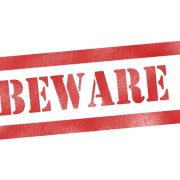What Investors Need to Apply for a Self-Directed Roth IRA
A Roth IRA is a unique arrangement for investors because it means that the money you put aside now can grow tax-free and be withdrawn tax-free when the rules allow. That is right: a Roth IRA allows investors to invest after-tax money, which gives them a tremendous amount of flexibility when it comes to retirement planning. But what is involved with creating a Self-Directed Roth IRA? Because this arrangement is not the traditional way people go about creating a Roth IRA, it is important to note what the application process will look like. Here is what investors can expect when applying for a Self-Directed Roth IRA:
What You Need to Open a New Self-Directed Roth IRA
First, the basics. There are two essential items you will need to get that Roth IRA opened, which includes:
- Valid photo ID. This can be a driver’s license, a passport, or other valid, government-issued ID.
- The account application. You can find an example of an application here at American IRA.
If you were signing up with American IRA, you would then send the completed forms to our Asheville, NC address.
To open an account, you will also need a method of funding said account. There are typically a few ways to do this. If you have an existing Roth IRA, you may be able to do a simple transfer of funds. However, if you previously worked with a Self-Directed Roth IRA custodian, it may require a Medallion Guarantee Stamp, similar to a notary seal.
Another option is the Rollover/Direct Rollover form. This will document the “rolling over” of your funds to a Roth IRA. In a direct rollover, cash is moved directly from one account to another. In an indirect rollover, your funds will be in your possession for up to 60 days as you wait to transfer them to the new IRA.
What You will Need in the Application Process
Part of the application process for a Self-Directed Roth IRA is the custodial application. You can get a sense of what this might look like by looking at a 5305-RA form, Roth Individual Retirement Custodial Account. But let us cover some of the basics of what you will need to know as you apply for your Self-Directed Roth IRA.
- “Custodian.” Who does the “custodian” refer to? The IRS has approval here, or the custodian may be a bank, or a savings and loan association. In the case of a Self-Directed IRA administration firm, this would have to be an IRS-approved organization capable of handling the custodian duties on a Roth IRA.
- “Depositor.” In this case, this is you. You are establishing the custodial account.
- Information to have handy. You will want a slew of personal information, of course—name, address, phone, email, marital status. These will not be unfamiliar to you. You will also want to know how you plan on funding the Self-Directed Roth IRA, and you may even include additional information such as people who are an “interested party” on your Roth IRA. An interested party may be someone you designate who can view the account balance, for example, but does not have decision authority of moving funds out of the account or sign on your behalf.
- The beneficiary or beneficiaries are parties who inherit the interests of an IRA. However, keep in mind that the rules aren’t necessarily cut-and-dry: you can find more information about beneficiaries on the IRS website.
A Self-Directed Roth IRA is a powerful tool for building wealth for retirement. And the process of setting one up with a Self-Directed IRA administration firm might be easier than you think. With the right knowledge, you do not have to feel intimidated about the process.
Interested in learning more about Self-Directed IRAs? Contact American IRA, LLC at 866-7500-IRA (472) for a free consultation. Download our free guides or visit us online at www.AmericanIRA.com.









